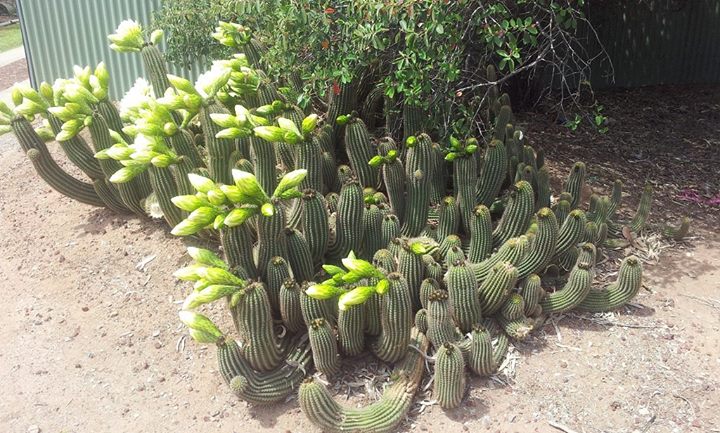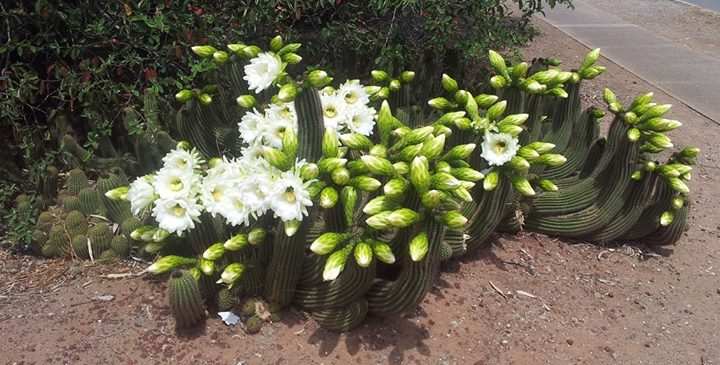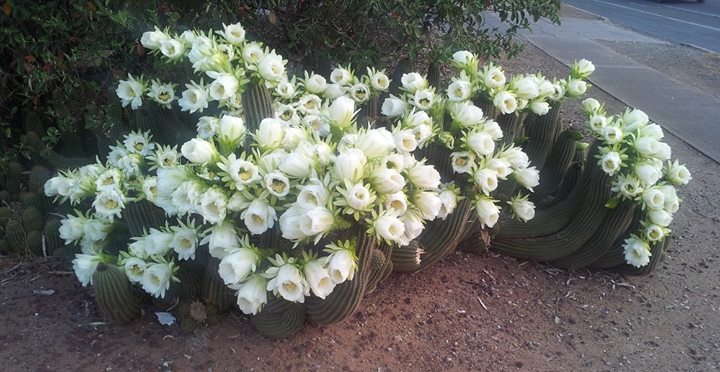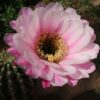
Trichocereus schickendantzii (Echinopsis) was originally described by Britton & Rose in their book THE CACTACEAE, which was published in 1920. The plants grow in large clusters, in which they are pupping abundantly from the base! They can get up to 40-50 Centimeters, though they usually stay around 30. They have a diameter of 5-8 centimeters and a very healthy, green colored epidermis.
Ribs: They usually have between 13-18 ribs that are between 0,5 and 1 cm high. The spines are yellow and between 1-2 cm long. It has 7-10 radial spines and 2-7 middle spines.
Flowers of Trichocereus schickendantzii:
The flowers are white and can get between 20-25 centimeters long with green tube and sepals and black heairs/white petals
Origin: Argentina, Tucuman
Cultivation: Trichocereus Schickendantzii is a very popular grafting stock and a hardy cactus. They can take a lot of water during the hot season, but should not get wet “feet”. The average temperature should be around 10° celsius during the winter time. In summer, they can be grown in full sun but usually prefer a spot with partial shade. They should be hardy down to at least 0° celsius (and maybe even more) but I would not feel comfortable testing the boundaries. In a European country like Germany or France, they won´t survive the winter if kept outside. Some growers in the south of france reported that they tried to overwinter it with some rain protection but I am not sure if it worked. They should be totally dry during the winter and only be watered from April to Oktober.
Seeds of Echinopsis schickendantzii
There are a couple of growers who offer seed every now and then on our Trichocereus Group on Facebook. The plant is also sometimes in stock in the SAB Shop. Apart from that, you might also be lucky to get it from Seed suppliers like Köhres or Kakteen Haage but I have no idea how viable their seed is. In case of fresh seed, they are very easy to grow from seed. They prefer a mineralic soil type.
At a very young age, they look very much like Trichocereus Grandiflorus. However, they don´t get as big as Grandiflorus and have a different pupping behaviour. But generally speaking, they can be very similar and many pics labeled as Schickendantzii, including some on that page may or may not belong to Trichocereus Grandiflorus. The pic that is underlined with cs California shows a very typical Schickendantzii, which is substantially smaller than the ones on the other pics. But since there also are hybrids, it´s pretty tough to keep them seperate from the more columnar growing Grandifloras.
Thank you very much to everyone who donated the Pictures! I greatly appreciate it!
by Gus Freeman!
by Henryk Kotowski Kotoviski
by Bachelot Pierre J-P
“Echinopsis schickendantzii (1)” by Karen and Brad Emerson
by Emily fromt Oakland
by Benoit Huron
Echinopsis schickendantzii by D. Patrick Lewis from Scottsdale, AZ, USA
Cacti at Paloma Gardens” by brewbooks from near Seattle, USA – Cacti at Paloma Gardens.

“Trinchocereus Volcanensis” by Claudio Elias
by Vivian Evans from Coonabarabran, NSW, Australia
“Soehrensia (Echinopsis) schickendantzii” by Sids1
“Trichocereus schickendantzii – Blütenknospe by Dornenwolf from Deutschland



























